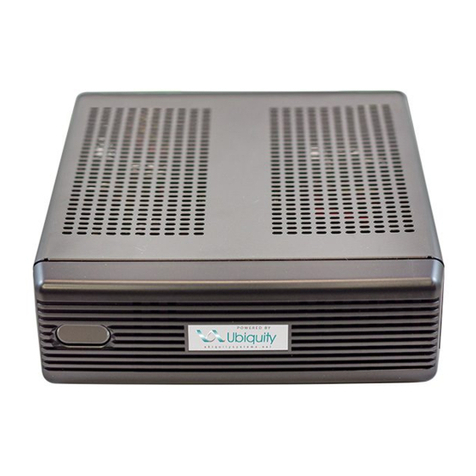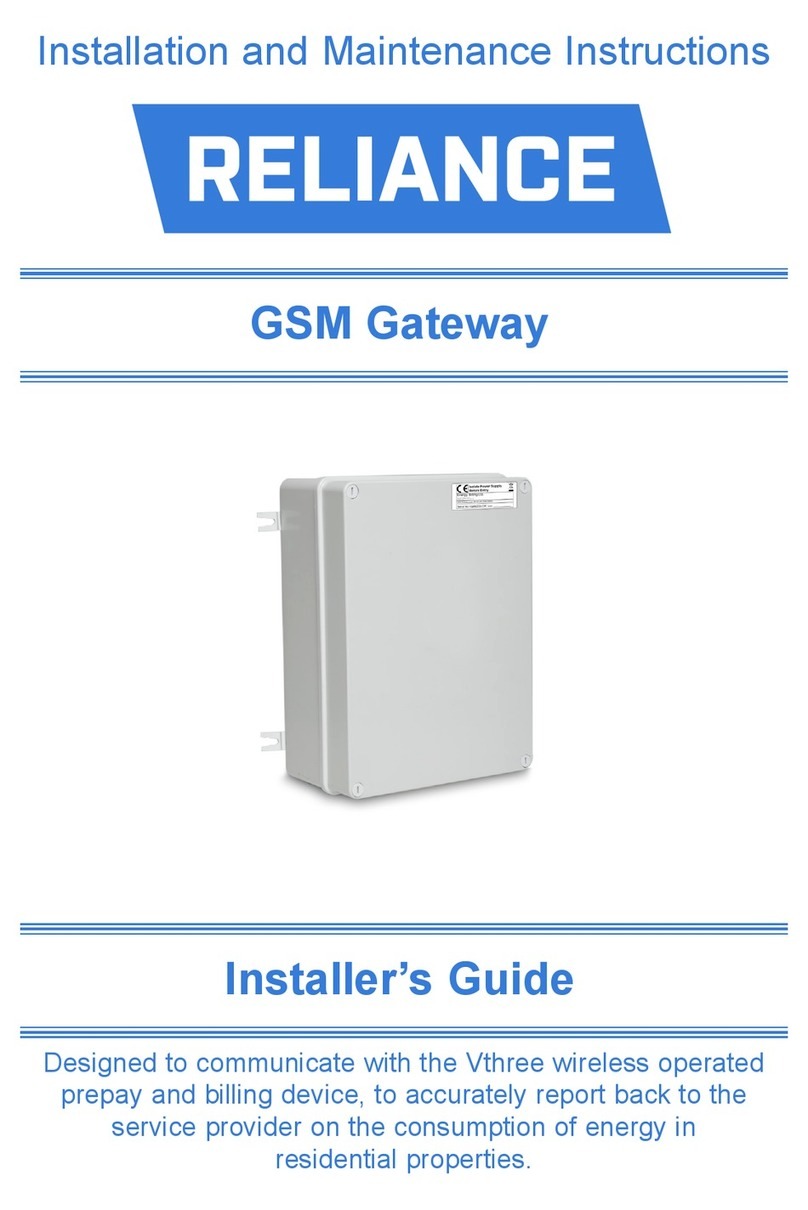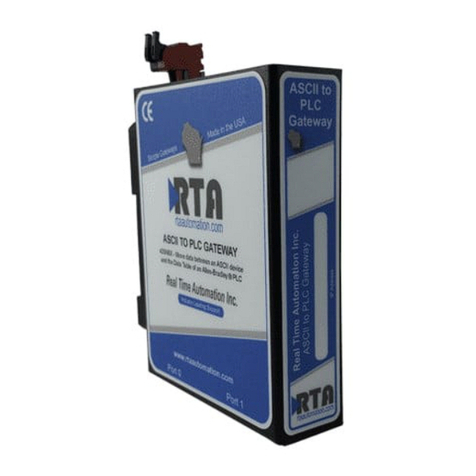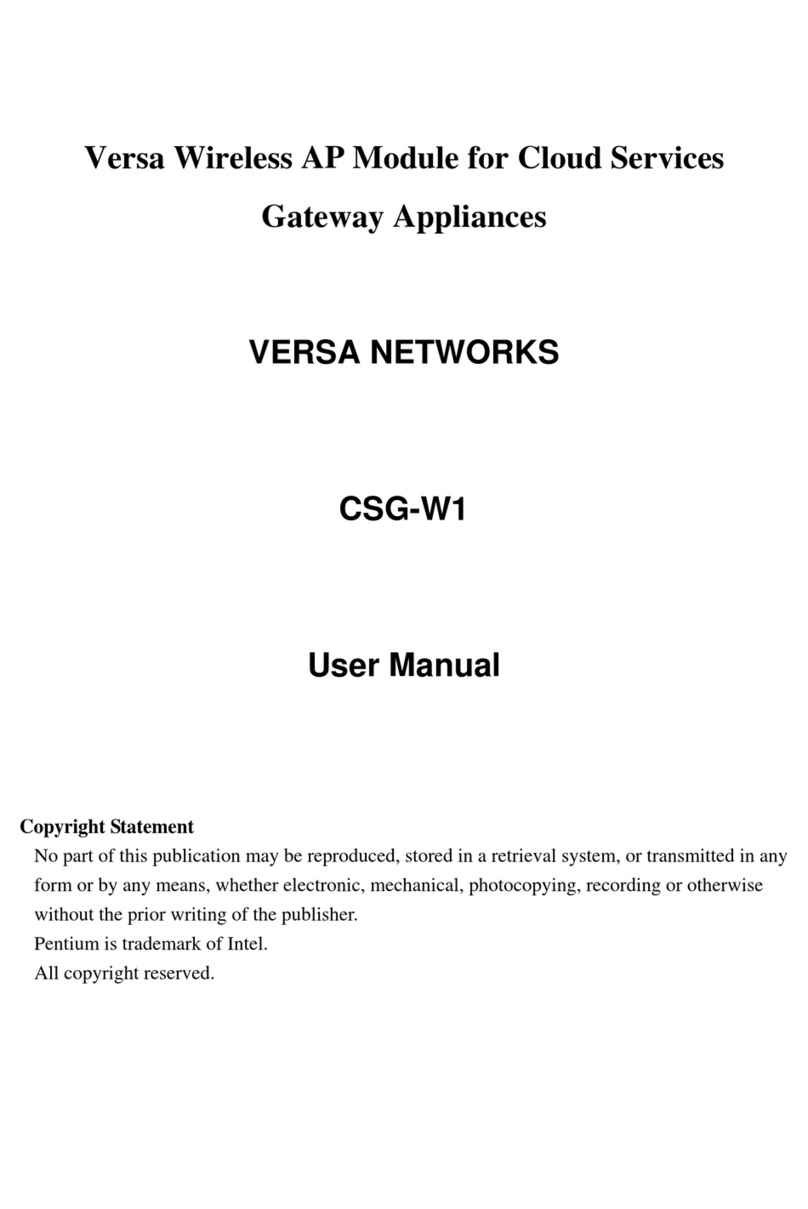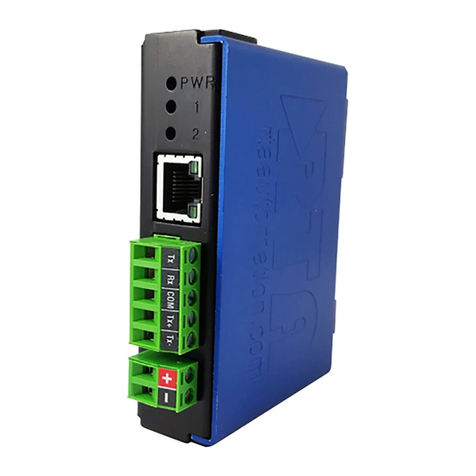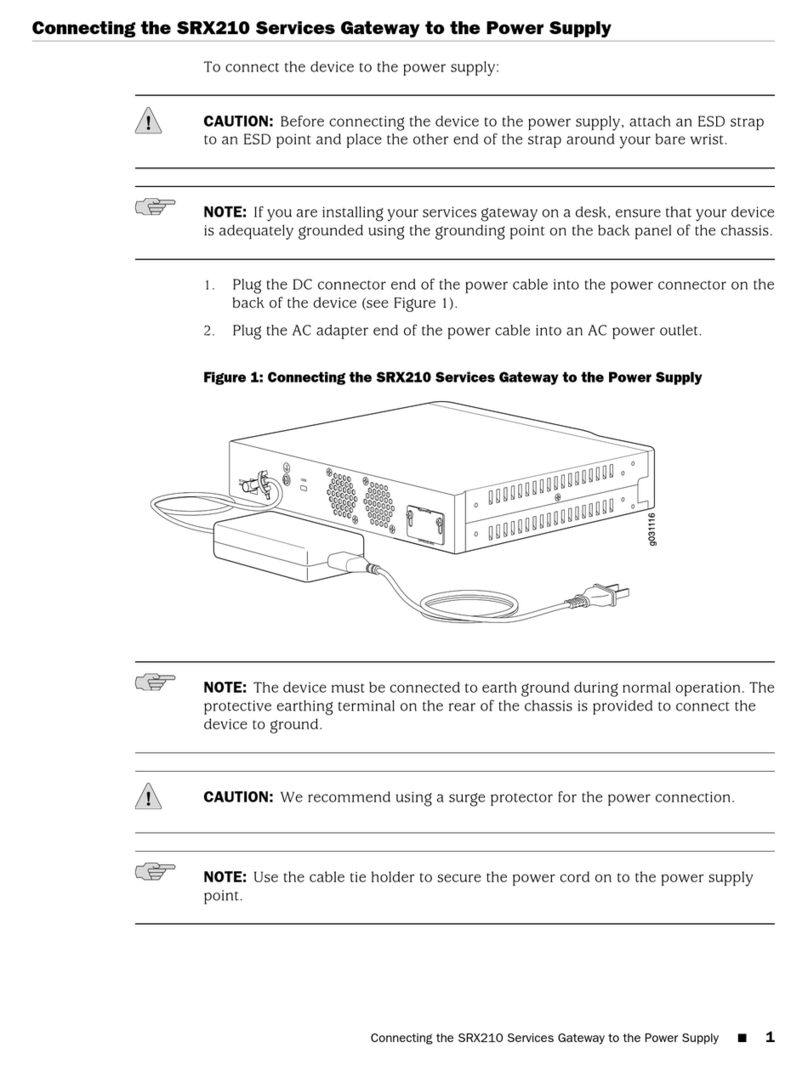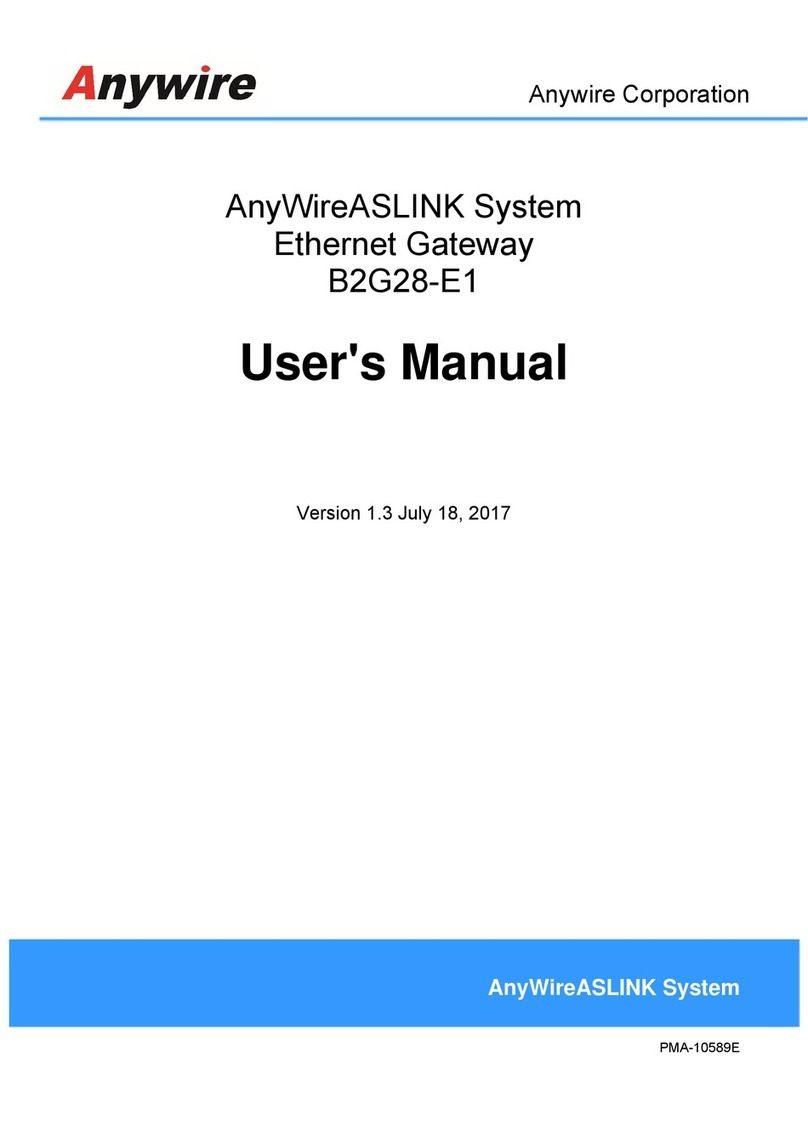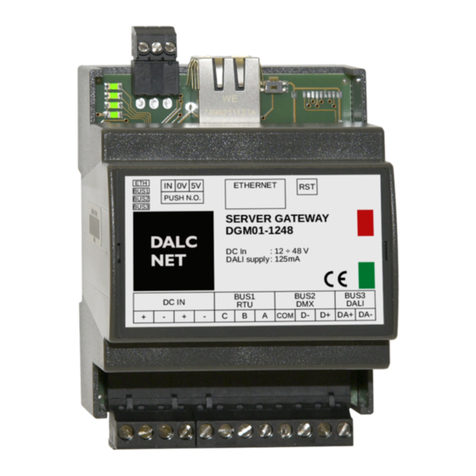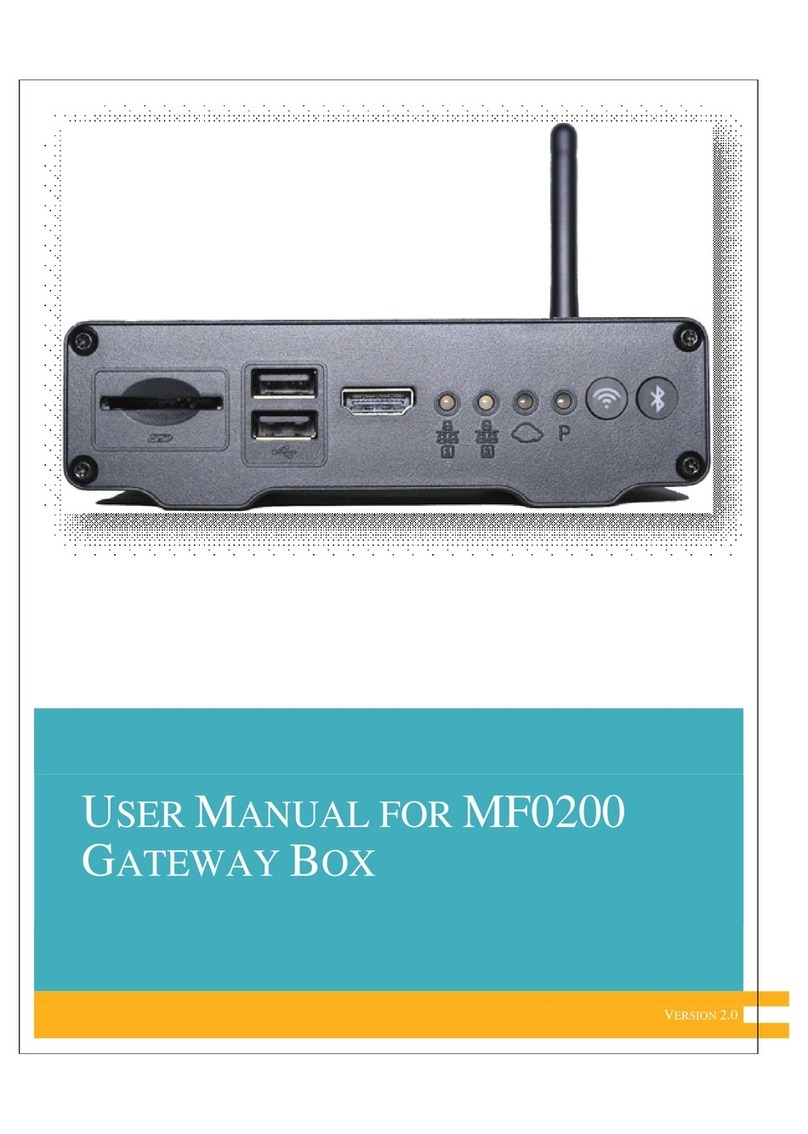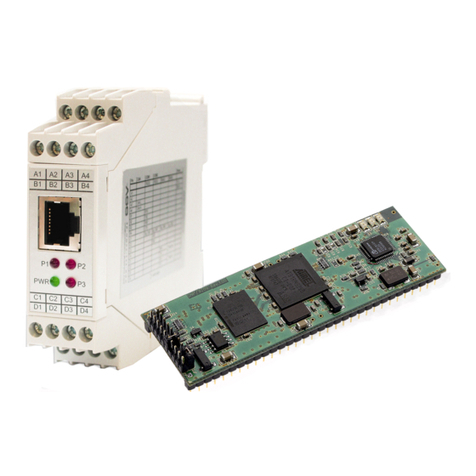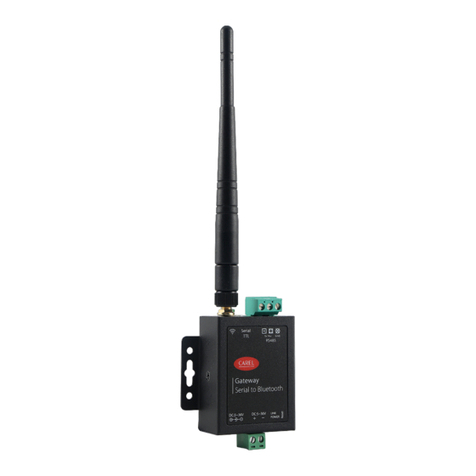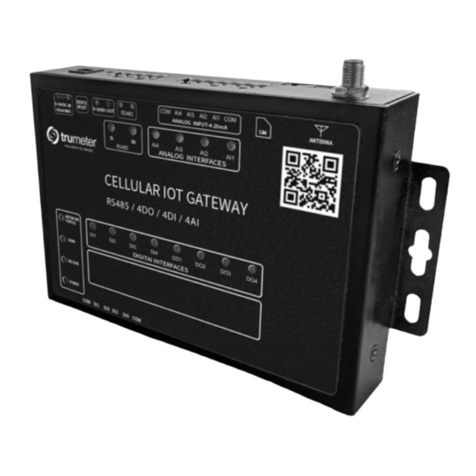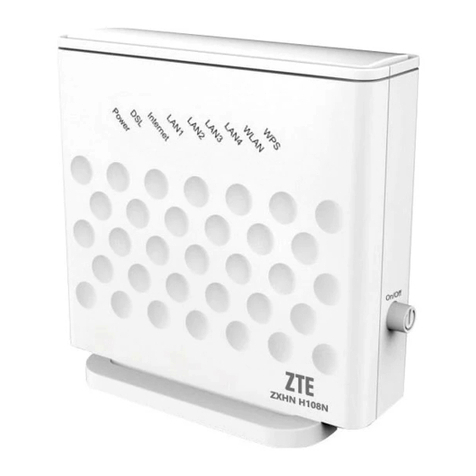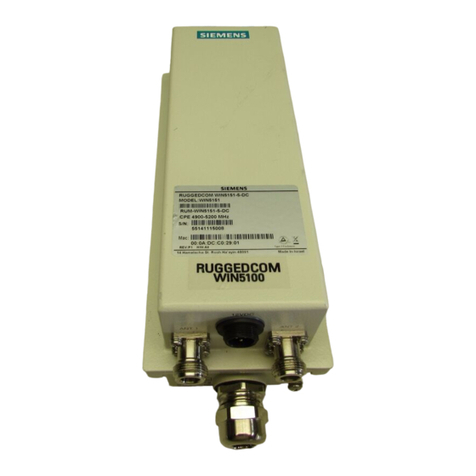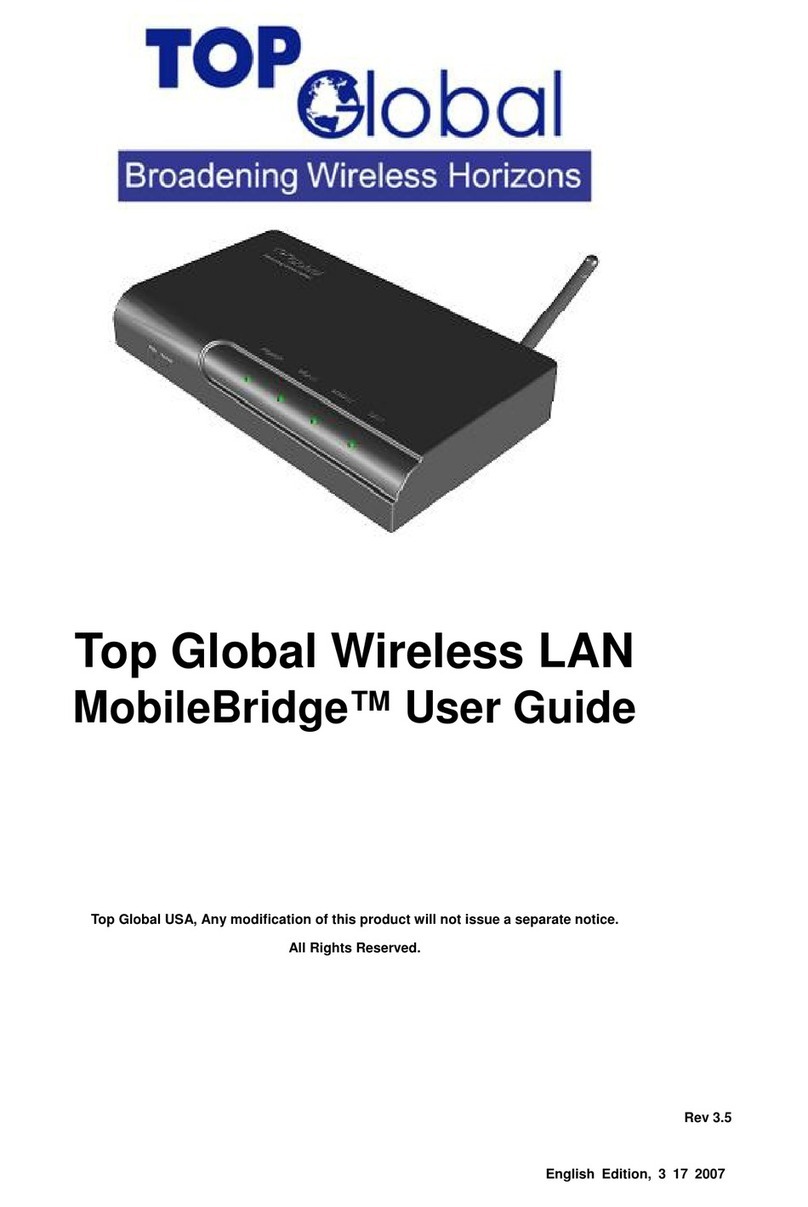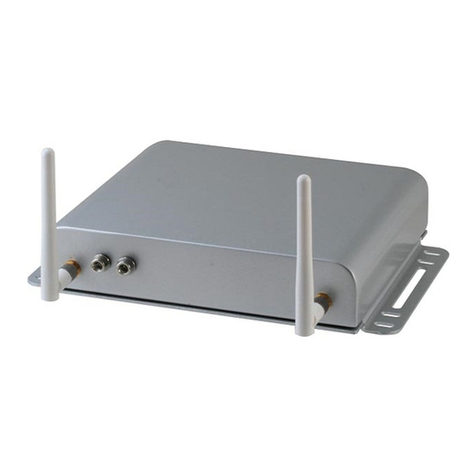digitalSTROM dSS-IP Manual

dSS-IP
digitalSTROM Server-IP
Manual
Operation & Settings

Table of Contents © digitalSTROM
ii dSS-IP_Manual
Table of Contents
1 Function and Intended Use .............................................................................................. 3
1.1 Setting up, Calling up and Operating ..................................................................................... 3
1.2 Requirements ......................................................................................................................... 6
2 Installation ...................................................................................................................... 7
2.1 Connect dSS-IP....................................................................................................................... 7
2.2 dSS-IP Setup........................................................................................................................... 8
3 Setup ............................................................................................................................. 12
3.1 Detecting IP Devices............................................................................................................. 13
3.2 Presets Setup ....................................................................................................................... 16
3.3 Creating User Defined Actions............................................................................................. 19
3.4 Creating Feedbacks.............................................................................................................. 21
4 Operation....................................................................................................................... 24
4.1 Voice Control with Amazon Echo.......................................................................................... 24
4.2 Voice Control with Smartphone App: dS Listener ............................................................... 24
4.3 Smartphone App: dS Dashboard.......................................................................................... 24
4.4 Smartphone App: digitalSTROM / dS Home Control ........................................................... 25
5 The Concept of dS Device Bots....................................................................................... 26

© digitalSTROM Function and Intended Use
dSS-IP_Manual 3 / 27
1 Function and Intended Use
With the digitalSTROM-Server IP "dSS-IP" you integrate IP-devices in your home such as
multiroom systems from Sonos, Philips Hue lights or the Smarter iKettle 2.0 into a totally
new world of intelligent home control – the digitalSTROM world. Devices are
interconnected in the simplest way and can be operated conveniently via digitalSTROM
Smartphone apps or by voice.
The digitalSTROM orchestration enables the simple interaction of IP devices and informs
you e.g. by the blinking of lights, voice output or by a push message on your smartphone,
when another device has finished its task.
The IP devices connected in the network are detected by the dSS-IP and integrated as a
digitalSTROM device. As a result, the devices receive the typical properties of a
digitalSTROM device and switch off automatically, such as when leaving the house. This
standard behavior and much more can be configured easily via a web interface, the
digitalSTROM Configurator (Setup).
This enables you to define rooms that match your rooms at home. In these rooms, for
example, you can now set presets for light or audio. The devices in the respective room
respond to the corresponding preset in the way requested by you and execute an
operation. And thanks to "User Defined Actions" available to you on the server as an app,
you can allow light and audio to perform a common action.
1.1 Setting up, Calling up and Operating
You can already control IP devices (e.g. Sonos, Philips Hue, Smart iKettle etc.) individually
using the appropriate manufacturer apps. With your dSS-IP not only do you control these
IP devices, but you interconnect them intelligently in the rooms and call up predefined
presets, actions or user defined actions in rooms. And later you can even equip bots with
dS device. Below are the most important terms for the configuration and setting of your
dSS-IP:
Rooms
All your IP devices have to be assigned to a room. To create presets and user defined
actions easily, you can create "rooms" using the dSS-IP, which correspond to the rooms in
your home. You then assign your IP devices to these rooms and can thus control them
intelligently and easily. Choose clear, understandable names for the rooms so that they
can also be controlled using the voice control.
You can find out how to create a room here: Detecting IP Devices
Presets
With the dSS-IP you set up the light and audio presets and thus predefine your preferred
settings on your IP devices per preset. Presets are room-dependent and are called up
room-related. All devices in a room can be included for a preset.
You can find out how to set up a preset here: Presets Setup
You can find out how to execute presets here: Operation

Function and Intended Use © digitalSTROM
4 / 27 dSS-IP_Manual
Actions (for devices)
In the case of household appliances, such as the "Smarter iKettle 2.0", operations to be
carried out are called "Actions". Actions are device-dependent and are called up on the
device. You can call up these actions directly later or you can set and call up an action for
a linked action from preset and device by means of a "user-defined action". Your IP
devices can execute actions that are subdivided into "standard actions" and "custom
actions". Standard actions are functions performed from the device, which are available to
every user. Custom actions are individually adjustable parameters of the user for the
device.
Example based on the device "Smarter iKettle 2.0"
Standard action: Boil up
Custom action: Boil up water for Black tea
set parameter: For action "Boil up water for my Black tea" only
boil up the water to 80°C with a warm-keeping time of
30minutes
User Defined Actions
The dSS-IP allows you to create extensive "user defined actions", which the previously
configured presets and actions call up (spanning all rooms and devices) on the IP devices
in the corresponding rooms.
Example of a user defined action:
Name of the user defined action: Breakfast
consisting of:
Preset "Cook" = Light goes on in the kitchen
Preset "Dining“ = Light goes on in the dining room
Action "Black tea" = Kettle goes on (heats up)
Preset "SWR3" = Audio, radio station goes on in the dining room
You can find out how to create a user defined action here: Creating User Defined Actions
Feedbacks
By the intelligent linking of the IP devices in your home the dSS-IP is also able to give
feedbacks to presets or actions that are called up. Thus, for example, Sonos can give a
voice feedback and the Philips Hue lights blink in the kitchen when the water for your tea
is ready. Or you receive a push message when a specific action has been performed in the
home.
You can find out how to set up a feedback here: Creating Feedbacks

© digitalSTROM Function and Intended Use
dSS-IP_Manual 5 / 27
digitalSTROM Server Apps in the dS Configurator
The digitalSTROM server apps extend the functionality of the dSS-IP with practical
applications. The apps are preinstalled on the digitalSTROM Configurator and can be
configured directly there. They allow the adjustment of the following functions.
• Timers
• Presence Simulation
• User Defined Actions
• Event Responder
• Push Messenger
• User Defined States
You can find further information and useful tips under "Help" in the relevant app in the
help bar at the bottom of the screen.
dS device bots
As the owner of a dSS-IP you will also have access to the "digitalSTROM device bots" in
the future. The dS device bots are available in the digitalSTROM system as additional
services and can be booked easily. You communicate directly with the device bot by app or
voice command and inform it about your requirements.
Find out more about the dS device bots here: The Concept of dS Device Bots

Function and Intended Use © digitalSTROM
6 / 27 dSS-IP_Manual
Operation/Control and Voice Control
The dSS-IP offers several options for calling up previously configured presets, actions or
user defined actions.
The following apps are available for operation on the smartphone/tablet:
• iOS App Store:
– digitalSTROM (operation/control)
– dS Dashboard (operation/control)
– dS Listener – (voice control, available in German only)
• Android Play Store:
– dS Home Control (operation/control)
– dS Dashboard (operation/control)
– dS Listener – (voice control, available in German only)
• Windows Store:
– dS Home control (operation/control)
– dS Listener – (voice control, available in German only)
• Amazon Echo (voice control)
Voice control with digitalSTROM is also possible via the Amazon-Echo. You can find
further information on integration of the Amazon-Echo here:
http://productinfo.digitalstrom.com/amazonalexahelp/
You can find a short video tutorial for the voice control app "dS Listener" via the following
link:
https://www.youtube.com/watch?v=GD8uxjF-orc&feature=youtu.be
1.2 Requirements
• Home network with Internet access and WLAN
• Compatible IP devices (e.g. Philips Hue, Sonos, Smarter iKettle 2.0)
• Computer or tablet with installed Internet browser
• "my.digitalSTROM" account (free-of-charge)
– Login for registered users: https://www.digitalstrom.com/index.php?cl=account
– Registration for new users: https://www.digitalstrom.com/index.php?cl=register

© digitalSTROM Installation
dSS-IP_Manual 7 / 27
2 Installation
2.1 Connect dSS-IP
uConnect the LAN cable to your router.
uConnect the LAN cable to the dSS-IP.
uConnect the power cable to the dSS-IP and connect the power supply to a socket
outlet.
2
1
3
Connect dSS-IP

Installation © digitalSTROM
8 / 27 dSS-IP_Manual
2.2 dSS-IP Setup
uOpen the digitalSTROM Configurator in the Internet browser via
https://dssip.local
dSSIP_Local
ðWhen logging on, a certificate security prompt appears. This will have a slightly
different appearance depending on the browser. The local web server on the dSS-
IP has a self-developed certificate for technical reasons, which is why this must be
confirmed/approved manually.
uDepending on the browser, confirm the security certificate (continue).
Security certificate
uEnter the login details:
User: dssadmin
Password: dssadmin
Login
ðThe digitalSTROM Configurator is opened.

© digitalSTROM Installation
dSS-IP_Manual 9 / 27
Extending View
uClick on Advanced View.
Advanced view
Updating System
The digitalSTROM system is continually being extended and improved. To ensure that you
benefit from new functions and bug fixes, update your system regularly.
uSelect in the menu
System > System Update
Check for new updates.
uSelect Update System.
ðThe updates are installed. This may take a few minutes.
uThe web interface must be reloaded. Confirm with OK.
ðThe Configurator is restarted.
System update

Installation © digitalSTROM
10 / 27 dSS-IP_Manual
Creating new password
Before you can use the my.digitalSTROM account, you have to create a new password.
Make sure that you use a secure password (lower/upper case letters, numbers and
special characters).
uCreate a new password in the menu
System > Password
.
uConfirm the new password with Apply.
Changing password
Set up location
To ensure that the sunrise and sunset can be used when using the timers, the server
requires the location of your home.
uIn the menu
System > System Settings
enter your Location.
Installing dS Apps
Before you can integrate IP devices (e.g. Philips Hue, Sonos, Smarter iKettle,…) or
additional functions (e.g. Push Messenger, …), you need the digitalSTROM server apps.
uIn the menu
Apps > Install
select the desired apps and install these.
Updating dS Apps
If you have already installed dS Apps, you must update these together with a system
update in order to always benefit from the latest advantages.
uIn the menu
Apps > Update
select Check for new updates.
uIf an update is available, select Update Selected or Update All.
ðThe updates will be executed and your apps will be up-to-date again.

© digitalSTROM Installation
dSS-IP_Manual 11 / 27
Activating Remote Access
To ensure that you can also access your home from outside, create a my.digitalSTROM
account and connect it to the digitalSTROM Server. This remote access is also necessary
in order to access the settings of certain IP devices (such as the iKettle).
uOpen the app my.digitalSTROM in the dS Configurator.
my.digitalSTROM app
uIf you do not yet have a free my.digitalSTROM account, register here via
https://www.digitalstrom.com/index.php?cl=register.
uConnect your dSS-IP to the account.
ðYou can now log in to your smartphone apps with this account and use the services
everywhere.

Setup © digitalSTROM
12 / 27 dSS-IP_Manual
3 Setup
Once you have installed all components, your home is ready for numerous functions of the
intelligent control with digitalSTROM in just a few steps. We will show you how to do this
with the simple example of the user defined action "Breakfast". The IP-devices Philips
Hue, Sonos and Smarter iKettle are integrated in this action. This will also work with
individual or other IP devices, however.
Requirements
• Your Philips Hue lights are configured using the smartphone app
Hue
from Philips.
• Your Sonos system is fully configured using the smartphone or PC app
Sonos
, and
play lists as well as favorites are created.
• Your Smarter iKettle is connected to your home network via the smartphone app
Smarter
(from version iKettle 2.0).
Example:
You have three Philips Hue lights and one Smarter iKettle installed in the kitchen. In the
dining room, one Philips Hue light and one Sonos speaker is installed.
When having breakfast, you want the light in the kitchen to appear with the lighting preset
"Cook"
and the light in the dining room to appear with the lighting preset
"Dine"
. The
Smarter iKettle should heat the water for
"Black tea"
and the Sonos speaker in the dining
room should play the radio station
"SWR3"
simultaneously.
DineCook SWR3Black tea
Kitchen Dining room
The individual steps for the setup will be explained below.

© digitalSTROM Setup
dSS-IP_Manual 13 / 27
3.1 Detecting IP Devices
Setting up Philips Hue
This App integrates the Philips Hue Bridge and all Hue lights into your digitalSTROM
system. The lights are available as devices in the rooms and can be configured
conveniently using the digitalSTROM Configurator or smartphone apps.
Connecting Philips Hue
uInstall the server app Hue Controller (Installing dS Apps).
Hue Controller
uOpen the Hue Controller app in the dS Configurator.
uSelect Connect Hue Bridge.
ðThe Hue Bridge is connected to digitalSTROM and the existing lights are detected
automatically.
Assigning Philips Hue Lights to the Rooms
uOpen the dS Configurator.
uIn the
Rooms
tab select the room created by Philips Hue.
uGive the room a name (in our example: "Kitchen").
uIn the
Rooms
tab select create new room.
uGive the room a unique name, e.g.
"Dining room"
and confirm it with OK.
uYou can now drag the individual IP devices into the rooms by drag-and-drop, e.g. the
dining room light into the
"dining room"
.
ðThe Philips Hue lights are now assigned to the rooms.

Setup © digitalSTROM
14 / 27 dSS-IP_Manual
Sonos Setup
This app enables Sonos speakers to respond to any digitalSTROM activities. You can either
save audio presets in the room with your favorites or any activities can be used as a
trigger. A current title or the current list can be used or any favorites and playlists can be
selected. Additionally, signal tones can be selected from a library.
Texts can be converted directly into speech and played back if necessary using the "Voice
output" function. Furthermore, the music can be stopped, started or muted via
commands.
Sonos Connection
uInstall the server app Sonos Controller (Installing dS Apps).
Sonos Controller
uOpen the Sonos Controller app in the dS Configurator.
uIn the
Sonos Speaker
tab select Automatically discover Sonos speakers.
ðThe existing Sonos speakers are detected and listed automatically.
Assigning Sonos Speakers to the Rooms
uIn the
Sonos Speaker
tab select the desired Sonos speaker.
uSelect Assign room and assign the desired speaker to the room.
uConfirm your entry with Save.
ðThe Sonos speakers are now assigned to the rooms.
Tips:
The Sonos speakers are not visible in the dS Configurator. You can, however, call up audio
presets for rooms.
If the Sonos speaker is in a room that has not yet been created, you can create a new
room during the selection
(Create new room: Room name)
.

© digitalSTROM Setup
dSS-IP_Manual 15 / 27
Smarter iKettle Setup
This app enables the integration of the Smarter iKettle 2.0 into your digitalSTROM system.
In the device settings the behavior can be set and own actions can be created. The device
settings can only opened with an active Internet connection.
Smarter iKettle Connection
uInstall the server app Smarter Controller (Installing dS Apps).
Smarter Controller
uOpen the Smarter Controller app in the dS Configurator.
uSelect Search for devices.
ðThe Smarter iKettle is now connected to digitalSTROM and stored in the dS
Configurator under its own room.
Assigning Smarter iKettle to a Room
uOpen the dS Configurator.
uIn the
Rooms
tab select the room Room #nnnn created by Smarter.
ðThe Smarter iKettle is displayed.
uYou can drag the iKettle into a room by drag-and-drop, e.g.
Kitchen
.
ðThe iKettle is now assigned to the room
Kitchen
.
uDelete the room
#nnnn
that is no longer used.

Setup © digitalSTROM
16 / 27 dSS-IP_Manual
3.2 Presets Setup
With the dSS-IP you can set up lighting presets and audio presets and thus predefine your
preferred settings for the IP devices. Presets are room dependent and are called up
room-related.
In order to control household appliances, such as the Smarter iKettle, no presets are set
up in the room, but actions are set up directly on the device instead.
You can call up these presets and actions later directly or you can link them together for
an action and then call them up.
Example:
When having breakfast, you want the light in the kitchen to appear with the preset
"Cook"
and the light in the dining room to appear with the preset
"Dine"
. At the same time, the
Sonos speaker in the dining room
SWR3
should place your favorites and the Smarter
iKettle should heat the water for
Black tea
.
Set up the following presets:
• Lighting preset
Cook
in the kitchen
• Lighting preset
Dine
in the dining room
• Audio preset
SWR3
in the dining room
• Own action
Black tea
for the Smarter iKettle in the kitchen
SWR3
Cook
Konfigurator
Black tea
Dine
Konfigurator
Kitchen
Dining room

© digitalSTROM Setup
dSS-IP_Manual 17 / 27
Setting Up Lighting Presets for Philips Hue Lights
uOpen the dS Configurator
uSelect a room in the
Activity
tab.
uOpen the menu item Light.
uSelect one of the predefined presets (1, 2, 3, 4).
ðThe available lights are displayed on the
devices
window.
uWith the right mouse button you can rename, the preset
(e.g. Dine)
.
uSelect a light and set the desired color.
uRepeat the color setting for all lights in the room.
uConfirm your preset with Save.
ðYou have now set up the preset
Dine
that you can use later.
ðProceed in the same way to set up the preset
Cook
in the kitchen.
Tip:
You can also set up the lighting presets on your smartphone/tablet using the
digitalSTROM (iOS) / dS Home Control (Android) app (under
Configuration > Activities
).
Setting up Audio Presets for Sonos
uOpen the Sonos Controller in the dS Configurator.
Sonos Controller
uIn the
Presets
tab select New Preset.
uIn the
Trigger
tab select the desired room and preset, which starts the music.
(to do this you can select one of the existing presets (2, 3, 4,…))
uIn the
What will be played
tab select the music you desire (e.g. SWR3) from your
playlist or favorites.
ðThe name of the music from your playlist or favorites will be used automatically as
the preset name.
uYou can optionally set the volume. Otherwise, the volume last used will be applied.
uConfirm your preset with Save.
ðYou have now set up the preset
SWR3
that you can use later.

Setup © digitalSTROM
18 / 27 dSS-IP_Manual
Actions for Smarter iKettle Setup
uOpen the Smarter Controller in the dS Configurator.
Smarter Controller
uSelect Open Device Settings Page.
uSelect Custom Actions.
uCreate a new action using (+).
uName the action (e.g.
Black tea
) and set the desired values.
uConfirm your action with Save changes.
ðYou have now created the action
Black tea
that you can use later.
Tips:
Alternatively, you can create a "bot". You will find information on this via the link Start the
bot here in the
Device settings
.
You can also open the device settings on your smartphone/tablet using the digitalSTROM
(iOS) / dS Home Control (Android) app under
Configuration > Devices
( ).

© digitalSTROM Setup
dSS-IP_Manual 19 / 27
3.3 Creating User Defined Actions
This digitalSTROM app defines the actual actions that can be easily executed via other
server apps or via a smartphone app. These actions can be composed of only one activity
or several different activities.
Make sure that you select a meaningful name so that it can also be understood for voice
controls e.g. "I want to have breakfast".
Example:
When you have breakfast, the light should switch on in the kitchen with the preset
Cook
and in the dining room with the preset
Dine
, the iKettle should heat up the water for
Black
tea
and the music
SWR3
should be played from your favorites.
Create the following user defined action:
• Breakfast
= +
SWR3
DineCook
Black tea
Breakfast
Dining roomKitchen
uOpen the User Defined Actions app in the dS Configurator.
User Defined Actions
uCreate a New Action.
uName the action, e.g. Breakfast.

Setup © digitalSTROM
20 / 27 dSS-IP_Manual
Adding Lighting Preset
uIn the
initiated activities
tab select Activity in room > Dining room > Light.
uSelect the predefined preset e.g. Dine.
ðProceed in the same way to add the preset
"Cook"
in the kitchen.
Adding Audio Preset
uSelect New activity.
uIn the
Initiated activities
tab select Activity in room > Dining room > Audio.
uSelect the predefined preset e.g. SWR3.
Adding iKettle Action
uSelect New activity.
uIn the
initiated activities
tab select Single device > Kitchen > iKettle.
uSelect the predefined action e.g. Black tea.
Saving User Defined Actions
uConfirm the new action with Save.
ðYou have created the user defined action
Breakfast
and you can now call this up.
Tips:
You can test the new action immediately using Test action.
The dS apps include an integrated Help (at the bottom in the app) for support.
Your dSS-IP is now connected to your IP devices, set up and the presets and actions are
ready to call up.
This manual suits for next models
1
Table of contents
